Danganronpa The Animation: A Comprehensive Guide
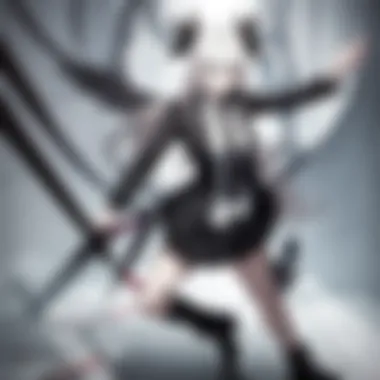
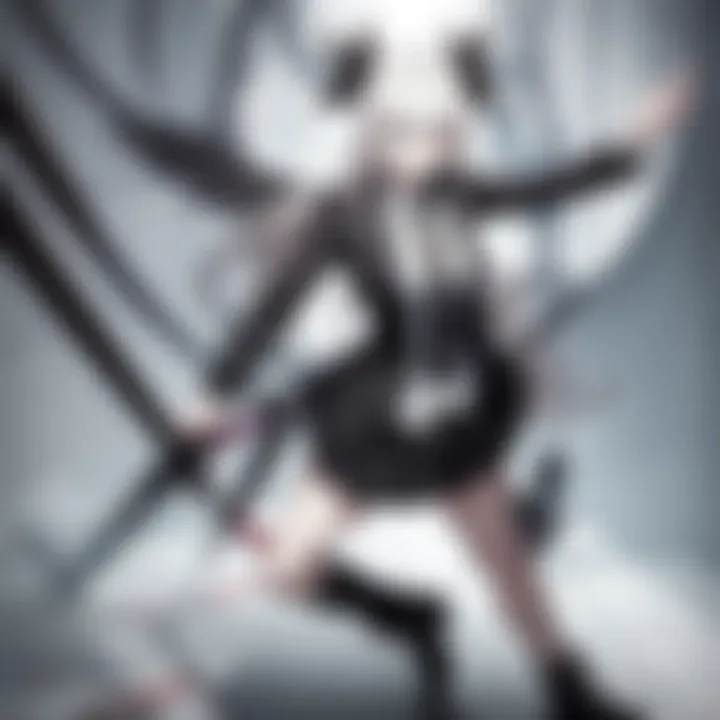
Intro
'Danganronpa The Animation' serves as a compelling adaptation of the acclaimed video game series known for its unique blend of murder mystery, psychological horror, and social commentary. This adaptation aims to condense the game’s intricate narrative into a more accessible format for anime viewers. The result is a work that reflects not just entertainment but also echoes broader themes relevant to contemporary society. The series captures its audience not only through its engaging story but also through the diverse and complex characters that inhabit its world.
The core of this guide will be to explore the character profiles, thematic elements, and cultural significance that 'Danganronpa The Animation' encapsulates. Additionally, we will analyze the critical reception and viewing options available for fans and newcomers alike. This guide will provide insights for those who wish to understand why this animation resonates with many and what it contributes to the landscape of anime.
Character Profiles
Overview of Main Characters
At the center of 'Danganronpa The Animation' lies a cast of characters who are both intriguing and flawed. Each character is designed to create a unique dynamic that drives the narrative forward.
- Makoto Naegi: The protagonist, characterized by his determination and earnest nature. He embodies the theme of hope amidst despair.
- Kyoko Kirigiri: A detective-like figure who showcases intelligence and mystery. Her analytical skills often prove essential in solving the series' pivotal murder cases.
- Byakuya Togami: The arrogant heir to a powerful family. He represents privilege and elitism, which often puts him at odds with other characters.
Supporting Characters
The supporting characters in 'Danganronpa The Animation' add layers to the story, contributing to its psychological tension:
- Aoi Asahina: An athlete with a cheerful disposition. She brings a balance of optimism to the dark themes of the show.
- Toko Fukawa: A dual personality character who juxtaposes shyness with a more aggressive persona. Her development is significant for the narrative.
- Monokuma: The sinister bear and mastermind behind the games. He serves as a powerful symbol of chaos and manipulation.
Theme Exploration
Central Themes
'Danganronpa The Animation' dives deep into themes such as despair vs. hope, the value of friendship, and the nature of truth. These themes resonate with viewers and compel them to engage with the storyline.
- Despair vs. Hope: This theme is embodied in the competition among students to survive. It raises questions about the lengths individuals will go to in order to attain hope.
- Friendship: The bonds between characters often clash with self-interest, highlighting the tension between solidarity and survival.
- Nature of Truth: The show explores the ambiguity of truth, where perceptions can be manipulated, leading to profound psychological effects.
Cultural References
The animation incorporates numerous cultural references that enhance its narrative depth. It includes nods to Japanese societal issues, such as youth depression and academic pressures. These references not only ground the series in reality but also provoke critical thinking among its audience.
"The manner in which 'Danganronpa The Animation' addresses contemporary issues through its characters and narrative is an essential aspect of its impact," one critic noted.
Popular Series and Recommendations
Top Anime Series of the Year
To further enrich a viewer's experience, several other anime series complement the themes presented in "Danganronpa The Animation":
- Attack on Titan: This series shares themes of survival and despair.
- Death Note: It explores morality and justice with intricate storytelling.
- Steins;Gate: Deals with elements of psychological thriller and time travel, appealing to those who appreciate complexity.
Hidden Gems in Manga
For readers looking to delve deeper, here are some lesser-known manga that echo similar themes:
- Paranoia Agent by Satoshi Kon: A psychological exploration of societal anxiety.
- Homunculus by Hideo Yamamoto: Focuses on identity and perception.
- Oyasumi Punpun by Inio Asano: A poignant tale dealing with depression and the struggles of growing up.
By following this guide to 'Danganronpa The Animation,' enthusiasts will gain a deeper appreciation for its narrative and characters while also being able to explore other works that resonate with its themes.
Prolusion to Danganronpa The Animation
The significance of examining Danganronpa The Animation lies in its unique place within the broader landscape of anime adaptations. The Danganronpa series, originally a video game, presents a complex narrative paired with intriguing characters and themes. Understanding its animation adaptation allows fans to appreciate the nuances of storytelling while engaging with the visual medium. This section aims to highlight essential components and considerations surrounding Danganronpa The Animation, proposing that the transition from gameplay to animation entails both challenges and opportunities.
Overview of the Danganronpa Franchise
Danganronpa is more than just an animated series; it is the culmination of a franchise that encompasses video games, novels, and spin-off media. The franchise began in 2010 with Danganronpa: Trigger Happy Havoc, a visual novel that characterized itself with murder-mystery elements set in a high school context. Throughout the years, Danganronpa has garnered a cult following, prompting the creation of sequels and this animated adaptation.
The blend of lighthearted art style with grim thematic content is a distinctive aspect, highlighting a contrast that the audience finds engaging. Each title introduces new characters and murders, while exploring overarching concepts such as trust and the nature of despair. Fans of the franchise appreciate the depth of storytelling and the intricate relationships between characters.
Adaptation from Video Games
The transition from a video game to an animated series presents a range of challenges that can affect the quality and reception of the product. In the case of Danganronpa The Animation, the adaptation condenses complex narratives and character arcs into a limited number of episodes. This can lead to the simplification of pivotal plot points, causing long-time fans to feel a lack of depth in certain areas.
However, this adaptation also allows for visual storytelling techniques that are unique to animation. Key moments from the game can be portrayed more dramatically, providing a fresh perspective to the audience. The challenge is in balancing fidelity to the source material while also making the story accessible to newcomers.
"An effective adaptation should capture the essence of its source while utilizing the advantages of its new format."
The adaptation strategy used in Danganronpa The Animation involves selecting defining moments from the game and emphasizing them within the animated context. This method attempts to retain audience engagement and ensures character development remains coherent. The goal is to honor the original while attracting a wider audience who may have little awareness of the game series. The successful adaptations often spark discussions within the community, offering fans opportunities to analyze character motivations and narrative consequences in new ways.
Plot Summary
Understanding the plot summary of Danganronpa The Animation is essential for grasping the broader implications of the narrative. The series integrates elements of mystery, psychological thriller, and drama, making the storyline both engaging and thought-provoking. This section highlights significant aspects such as the premise setting and the main story arcs, which serve to depict the overarching themes of despair, hope, and the human spirit.
Premise Setting
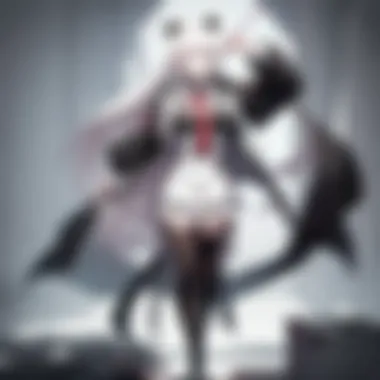
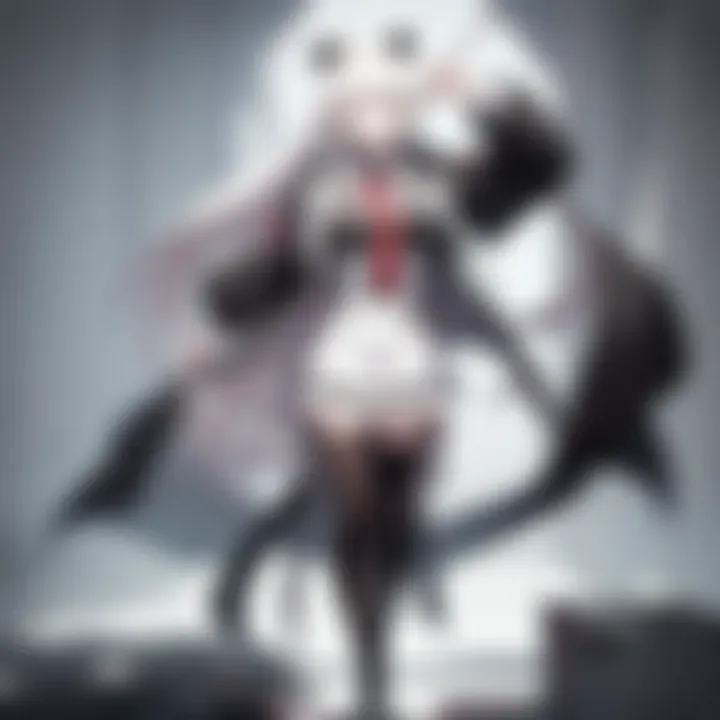
The setting of Danganronpa The Animation is a fictional elite high school called Hope's Peak Academy. This academy is distinct for selecting only the "best" students across various fields. Upon their admission, students are presented with a facade of hope and success. However, the harsh reality soon emerges when students find themselves trapped within the academy by a sinister force known as Monokuma, a robotic bear. This unique premise establishes a stark contrast between the ideals of hope and the despair surrounding their situation. Such a backdrop allows for deep exploration of character dynamics and the moral dilemmas faced by the characters.
The atmosphere is dominated by a claustrophobic sense of entrapment, which heightens the tension and stakes. Characters are forced to confront existential questions of life and death while navigating relationships gone awry. The juxtaposition of a prestigious academy with horrifying circumstances encapsulates the series' trademark themes and reflections of society.
Main Story Arcs
The Danganronpa The Animation narrative unfolds through multiple story arcs. Each arc delves into different characters and their respective backgrounds while ultimately contributing to the central conflict.
- The Killing Game Arc: As the students strive to escape, they are compelled to participate in a deadly game orchestrated by Monokuma. This arc introduces the concept of mutual distrust among students, and illustrates how quickly friendships can deteriorate under pressure.
- The Investigation Arc: Following each murder, students must search for clues to identify the culprit among them. This arc emphasizes the importance of critical thinking and exposes the flaws in each character’s perception of loyalty and deceit.
- The Trial Arc: The progress leads to classroom trials where students debate and present evidence. These trials not only encompass dramatic reveals but also promote conflict between ideals of justice and survival. The outcomes significantly impact character development and yield moral quandaries, as guilt and innocence intertwine unpredictably.
This multilayered storytelling involving complex character relationships and ethical dilemmas creates a rich tapestry that engages viewers. In essence, the plot summary encapsulates the blend of horror and human emotion, which resonates with audiences and allows for a deeper reflection on societal issues.
In a world where every decision can lead to life or death, the struggle between hope and despair becomes not just a personal battle, but a commentary on the human condition itself.
By dissecting these arcs, we find the groundwork that builds the psychological layers and thematic richness that Danganronpa The Animation offers its viewers.
Character Analysis
Character analysis is a fundamental component of understanding Danganronpa The Animation. The characters in this series are not merely conduits for the plot; they embody complex themes and emotional narratives. Each character serves a purpose that extends beyond their immediate actions, allowing for a thorough exploration of the psychological dimensions of the story. This section sheds light on the distinct roles played by the protagonists, antagonists, and supporting characters, emphasizing how their interactions illuminate the overarching themes.
Protagonists
The protagonists of Danganronpa The Animation are central to the viewer's experience. Makoto Naegi stands out as the main character, characterized by his unwavering idealism against despair. His journey through the complex moral landscape of Hope's Peak Academy reflects a struggle between maintaining hope and succumbing to despair. Each protagonist represents different facets of hope and perseverance, revealing how their backgrounds shape their motivations and decisions.
Furthermore, characters like Kyoko Kirigiri and Aoi Asahina add depth to this dynamic. Kyoko's analytical nature and Aoi's supportive spirit intertwine to create an engaging depiction of friendship. Together, these characters showcase various ways individuals cope with extreme situations. The audience learns about resilience and the importance of unity through their interactions.
Antagonists
In stark contrast, the antagonists in Danganronpa The Animation are crucial for establishing the conflicts that drive the narrative. Monokuma serves as a symbol of despair, orchestrating the deadly game that pits students against each other. This character embodies the manipulation of hope, twisting it into a tool of despair. However, it is the backstory of the antagonists, like Junko Enoshima, that provides chilling depth. Her motivations stem from a nihilistic view of humanity, making her a compelling villain.
The portrayal of antagonists invites viewers to consider the complexities of morality. By understanding their history and motivations, the audience can engage in a deeper discussion about the nature of evil in the world, rather than viewing it in black and white terms. This ambiguity enhances the psychological tension within the series, encouraging critical thinking about trust and betrayal and the human condition.
Supporting Characters
Supporting characters play a pivotal role in fleshing out the world of Danganronpa The Animation. They often provide essential context or foil the lead characters’ traits. Characters such as Toko Fukawa and Byakuya Togami reflect varied approaches to stress and threat. Toko's duality—an insecure girl and a confident alter ego—offers insights into identity crises under pressure. Byakuya, with his arrogance, incites challenges that reveal the vulnerabilities of others.
Through these characters, the series explores themes of trust and betrayal. Their interactions with protagonists and antagonists alike illustrate how alliances shift in dire circumstances. This emphasizes that no character exists in isolation, and every choice has ramifications on the group.
In summary, a detailed character analysis not only enhances appreciation of Danganronpa The Animation but also encourages viewers to reflect on the multi-dimensional nature of human relationships under pressure. Understanding these characters enriches the viewing experience and reveals the depth of storytelling present in this adaptation.
Themes and Motifs
In the realm of Danganronpa The Animation, themes and motifs play a pivotal role in crafting the narrative's intensity. They are not mere embellishments; rather, they serve as the foundation for character development and plot progression. Each theme invites viewers to grapple with profound questions about existence, morality, and human relationships, amplifying the overall experience of the series.
Despair vs. Hope
The eternal struggle between despair and hope is central to Danganronpa. This theme represents the conflict between succumbing to negativity and striving for a better outcome. Several characters embody this dichotomy; for instance, Makoto Naegi symbolizes hope, while characters like Junko Enoshima epitomize despair. This contrast is not only thematic but also affects the character arcs and choices.
In moments characterized by despair, the narrative challenges both characters and viewers to question the validity of hope itself. Is it truly worth it when faced with overwhelming odds? This theme invites the audience to reflect on their own experiences, fostering a deeper connection with the narrative.
Trust and Betrayal
Trust is a scarce commodity in the Danganronpa universe. The series explores how relationships are shaped by the potential for betrayal. As characters are forced to confront their peers in life-or-death situations, the lines between friend and foe blur. This leads to an exploration of the psychological impacts of betrayal. The shockwaves it creates resonate throughout the community of characters, driving the plot's tension.
Trust and betrayal are often depicted through critical plot moments that showcase the characters' decisions. These moments emphasize that alliances can be temporary, raising questions about loyalty and deception. The manifestation of this theme complicates the viewer's understanding of morality in extreme situations, prompting reflection on the nature of trust itself.
The Nature of Humanity
Danganronpa The Animation also delves into what it means to be human. The characters frequently confront moral dilemmas that test their humanity. The series asks whether the potential for good or evil defines a person. Characters react differently to the extreme pressures of their environment, leading to varied interpretations of their fundamental nature.
Discussions arise about the instinct for survival versus the willingness to sacrifice for others. Some characters choose self-preservation, revealing darker facets of their personality, while others rise to the occasion, showing altruism amid chaos. This theme encourages viewers to analyze their own values and the impact of extreme circumstances on human behavior.
"Understanding the interplay of despair and hope, trust and betrayal, and the essence of humanity provides a rich ground for interpretation and discussion in Danganronpa."
In summary, Danganronpa The Animation excels in weaving intricate themes that resonate on multiple levels. They elevate the narrative beyond simple entertainment and invite viewers to contemplate essential questions about their own lives. By framing these intricate motifs within the context of a thrilling story, the series engages on both emotional and intellectual fronts.
Visual and Artistic Elements
The Visual and Artistic Elements of Danganronpa The Animation play a pivotal role in conveying its unique storytelling and complex themes. The animation style and character design create an engaging atmosphere that captures the audience's attention. These elements help in establishing the tone of the series and enhance the viewer's understanding of character motivations and emotional states. The color palette, animation techniques, and design choices are crucial for creating the distinctive aesthetic that fans have come to appreciate.
Animation Style
The animation in Danganronpa The Animation showcases a blend of vibrant colors and stylized character movements. This style is heavily influenced by the visual design of the original video games. The dynamic motion sequences add a sense of urgency and tension, particularly during trial scenes where characters face dire circumstances.
The use of dramatic angles and fast-paced cuts effectively heightens emotional responses. Each episode combines low saturation during moments of despair with bright hues when hope emerges, reflecting the underlying theme of hope versus despair. This contrast is vital in engaging the viewer and immersing them in the narrative.
Moreover, the series incorporates visual motifs that symbolize important concepts. For instance, ominous shadows often surround characters to denote their darker thoughts or intentions. Such artistic choices not only serve to emphasize plot points but also make for a memorable viewing experience.
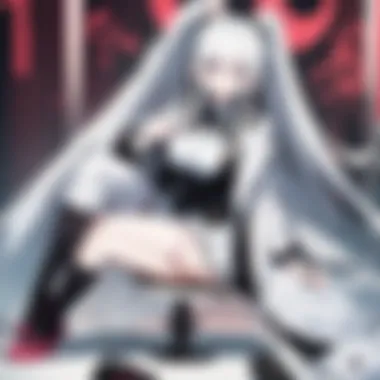
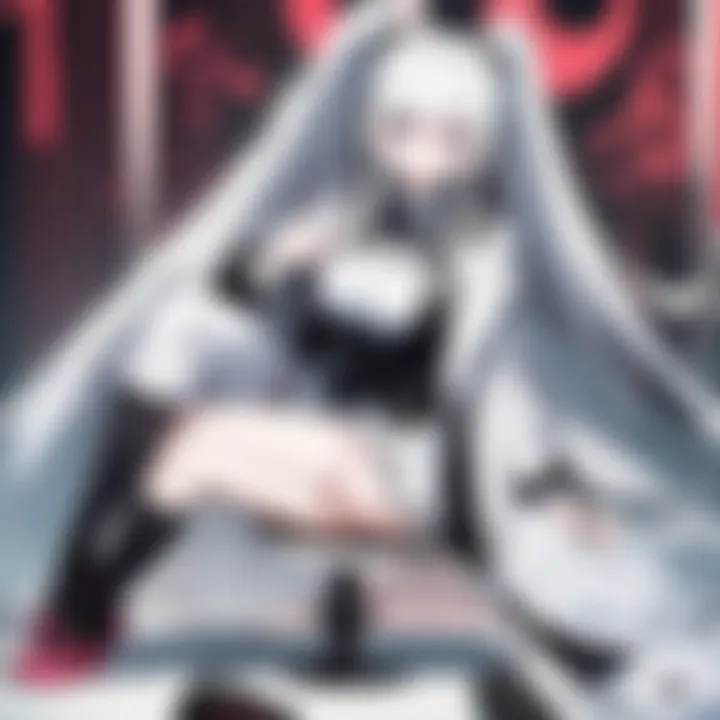
Character Design
Character design in Danganronpa The Animation maintains the distinct personalities and traits of each character while fostering relatability. Each character's design aligns closely with their backstory and role in the series. For example, the protagonist, Makoto Naegi, has a simple yet expressive design that emphasizes his everyman qualities.
Contrast this with the antagonistic figure Monokuma, whose jarring black-and-white colors represent the clash between hope and despair. His playful yet sinister appearance resonates with the series’ thematic elements.
Attention to details in character design extends beyond appearance. Facial expressions are exaggerated, allowing viewers to quickly grasp characters' emotions. This visual strategy becomes essential during critical moments when words alone cannot convey the intensity of a situation.
Cultural Impact
The cultural impact of Danganronpa The Animation extends beyond simple entertainment value. When exploring this adaptation, it is crucial to understand how it interacts with contemporary themes in society and its lasting significance within the anime community. This section examines various elements related to the series' cultural footprint, highlighting its relevance and the discussions it inspires among its audience.
Reception in Japan
In Japan, Danganronpa The Animation garnered considerable attention upon its release. The franchise was originally greeted as a fresh take on the visual novel genre within video games. This anime adaptation captured existing fans while attracting newcomers. The unique premise involving high school students trapped in a deadly game stirred discussions about morality and social dynamics. Given the societal pressures faced by Japanese youth, these themes resonated deeply with audiences. Moreover, the distinctive art style, combined with unconventional storytelling, contributed to the show’s popularity.
Critical reviews from Japanese media outlets highlighted the blend of comedy and grim narratives, illustrating a complex emotional landscape. Audiences praised the character development, which encourages viewers to reflect on their choices and alliances. This depth in character exploration contributed to vibrant fan communities, where discussions flourish about each character’s fate and the moral dilemmas they face.
Global Reception
As Danganronpa The Animation spread beyond Japan, it enlisted a devoted global following. Fans worldwide embraced the series for its intricate plots and relatable themes despite cultural differences. Online forums, like Reddit, became platform for discussions about the ethical implications of the game’s premise and the value of trust among peers.
Also, streaming services facilitated quick access, enhancing its visibility. The show gained attention for tackling issues such as betrayal and hope. The duality of these themes made the series appealing to a diverse audience, prompting them to examine their views regarding responsibility towards others.
Viewer reception varied, reflecting different values across cultures. In some regions, the direct confrontation of trust and despair sparked critical discussions about modern relationships. The fandom expanded, leading to fan art and theories, further enriching the cultural conversation.
"Danganronpa The Animation is more than an anime; it's a reflection of youth experiences and moral choices that engages viewers on multiple levels."
In summary, the cultural impact of Danganronpa The Animation is a testament to its successful adaptation from video games to an anime format. The series has prompted meaningful dialogue, resonating with various audiences around the world. By tackling complex themes, it has solidified its position within the anime landscape and continued to influence contemporary discussions.
Reception and Criticism
The section on Reception and Criticism is pivotal in understanding the overall impact of Danganronpa The Animation on its audience and the media landscape. Reception encapsulates how critics and viewers respond to the work, providing insight into its strengths and weaknesses. Analyzing this reception allows enthusiasts to grasp why certain elements resonate and others do not. It highlights engagement between creators and fans, which reflects broader trends in anime consumption and expectations.
Critical Reviews
Critical reviews serve as a guiding metric for gauging the quality and narrative effectiveness of Danganronpa The Animation. Overall, reviews from various critics have shown a range of perspectives.
- Positive Remarks: Many critiques commend the adaptation for its faithfulness to the source material. The ability of the anime to capture the essence of the Danganronpa games is frequently highlighted. Critics note that the psychological thriller nature is well-translated into the anime format.
- Artistic Choices: The animation style has drawn appreciation for its unique visual flair. Reviewers often mention how specific sequences imbue a sense of urgency. The character designs are also acknowledged to effectively embody personalities, providing visual cues to their roles in the plot.
- Narrative Flow: However, some critique exists regarding pacing. \ Critic evaluations have pointed out moments where the plot feels rushed, especially for viewers unfamiliar with the game series. Such insights present a double-edged sword, emphasizing the challenges faced by adaptations bridging various media.
- Character Development: There are also discussions surrounding character depth. While key characters receive attention, some secondary roles may feel underdeveloped. This has led to mixed reviews about the overall richness of the narrative.
Viewer Reception
Viewer reception provides another lens through which to view Danganronpa The Animation. Viewer feedback often reflects personal connections to the material, revealing valuable insights into how audiences perceive the characters and themes. Key aspects include:
- Community Sentiment: Many fans shared their excitement over engaging storylines and character dynamics on forums such as Reddit. The twists in the plot maintain tension and keep viewers invested.
- Cultural Discussions: Viewers often engage in discussions that explore the cultural implications of despair, hope, and morality. These themes spark deep conversations within the community.
- Diverse Opinions: As expected, some reviews on platforms like Facebook express disappointment in certain adaptations from the original game. The diversity in reception indicates the difficulty in satisfying a varied audience with different expectations.
"The anime certainly captures the chaos of the games but might leave newcomers puzzled at times." - An avid fan
Overall, the reception of Danganronpa The Animation, through critical and viewer lenses, showcases a complex interplay of praise and critique, demonstrating the nuanced experience of adapting such a well-loved franchise.
Viewing Options
When it comes to experiencing Danganronpa The Animation, understanding the various viewing options is crucial for maximizing one's engagement with the content. The way viewers choose to watch can significantly impact their interpretation of the series, the overall enjoyment, and even the accessibility of the material. This section will explore the streaming services and physical media available for this adaptation of the popular video game franchise, highlighting key benefits and considerations for each.
Streaming Services
Streaming services have become the dominant method for consuming anime content. With Danganronpa The Animation, platforms like Crunchyroll and Funimation offer options for viewers that prioritize convenience and accessibility. These services usually provide a seasonal format, releasing episodes as they come out, or, in some cases, the entire series at once. This flexibility allows viewers to binge-watch or enjoy episodes week by week.
Some specific benefits of using streaming services include:
- Wide Accessibility: Streaming services can be accessed from various devices, including smartphones, tablets, smart TVs, and laptops.
- Up-to-date Episodes: Fans can watch new episodes immediately upon release, keeping in touch with trends in real time.
- Multiple Language Options: Many streaming platforms provide subtitled and dubbed versions, accommodating diverse viewer preferences.
However, there are considerations to keep in mind:
- Subscription Costs: While some services offer free content, many require subscriptions, which can vary in price.
- Regional Restrictions: Availability of Danganronpa The Animation might differ by region, limiting access for some viewers.
Physical Media
Physical media, such as Blu-ray and DVD collections, remains an important format for those who prefer to own their content. Purchasing Danganronpa The Animation physically offers several distinct advantages that appeal to collectors and those who might want to watch without an internet connection.
Some of the notable benefits include:
- Complete Control: Owners can watch their favorite episodes at any time without depending on streaming availability.
- Bonus Features: Physical releases often come with bonus content such as behind-the-scenes footage, interviews, and additional merchandise.
- Tangible Collection: Collectors value the physical aspect of owning series, giving a sense of connection and permanence to the media.
However, there are challenges associated with physical media:
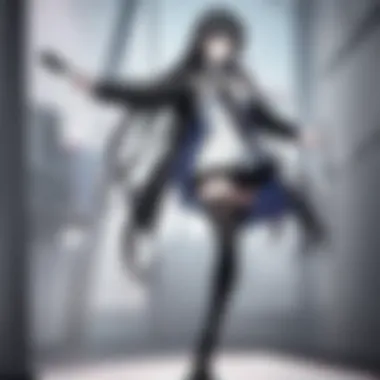
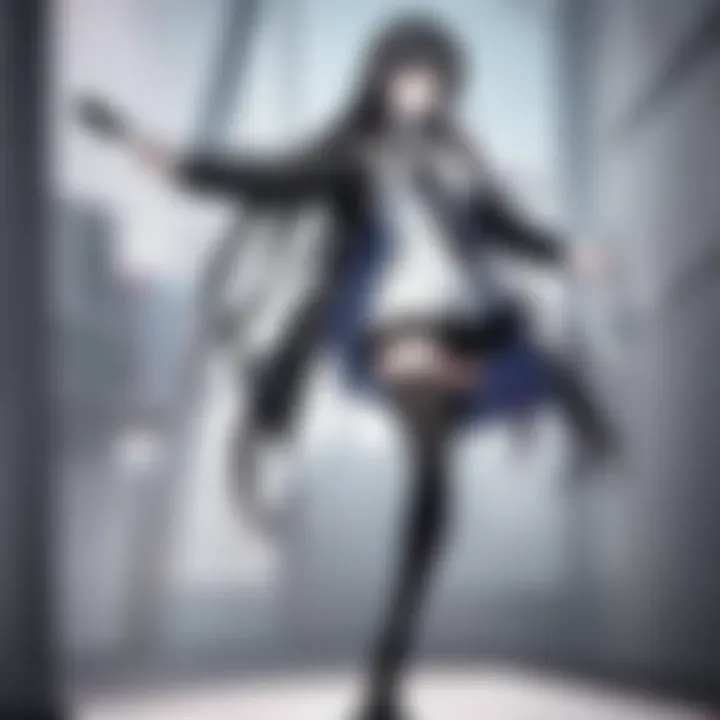
- Storage Space: Owning physical copies requires adequate storage space, which can be a challenge for some.
- Potential for Obsolescence: With the rise of digital media, physical formats may become less relevant over time.
Overall, viewing options greatly affect how audiences interact with Danganronpa The Animation. Each method provides unique advantages tailored to specific viewer preferences and needs, allowing audiences to choose the best way to engage with this complex and intriguing series.
"Viewing options can shape the audience's overall experience of a series, influencing everything from enjoyment to accessibility."
For additional information on what platforms are currently available for streaming, you may check platforms like Crunchyroll or Funimation.
Further details about purchasing physical media can often be found on sites like Amazon or Right Stuf Anime.
By considering both the digital convenience of streaming and the tangible nature of physical media, viewers can find the most suitable way to enjoy Danganronpa The Animation.
Comparative Analysis
The comparative analysis of "Danganronpa The Animation" is crucial in understanding its place within the larger context of anime adaptations. This section delves into how it stands alongside other adaptations and the impact it has had on subsequent works in the genre.
Comparison with Other Anime Adaptations
To appreciate "Danganronpa The Animation," one must first evaluate its structure and thematic elements against other notable anime adaptations. Many adaptations tend to streamline content for television. This often leads to either character over-simplification or essential plot points being omitted. In contrast, "Danganronpa" maintains complexity, showcasing intricate character development and moral dilemmas. For instance, adaptations like "Attack on Titan" and "Sword Art Online" exhibit similar thoughtful narratives but utilize their own unique storytelling devices which can differ significantly.
Moreover, the pacing issues that arise in many adaptations are somewhat mitigated in "Danganronpa." The series effectively uses cliffhangers and visual storytelling to sustain viewers’ interest. Elements such as visual cues and auditory signals create a more immersive experience. Critics have noted that these techniques propel the series beyond typical adaptations; it becomes a psychological thriller that demands viewer engagement on multiple levels.
Influence on Later Works
The influence of "Danganronpa The Animation" on later anime can be clearly observed. The series introduced innovative narrative techniques that have been adopted by subsequent shows. Its success emphasized the importance of integrating psychological elements into storytelling. Later series, such as "The Promised Neverland," exhibit similarities in building suspense and player dynamics reminiscent of "Danganronpa."
Furthermore, the fandom and community engagement sparked by "Danganronpa" laid groundwork for future titles. It has fostered a more interactive dialogue between creators and viewers. This interaction has influenced how new series are marketed and developed, encouraging viewer participation through forums and social media platforms.
"The interplay between despair and hope in Danganronpa redefined audience expectations in psychological anime."
In summary, the comparative analysis unveils how "Danganronpa The Animation" not only stands out but also sets a precedent for narrative depth and character complexity. By exploring its impact on later works, we gain insights into the evolving nature of storytelling in anime.
Online Community Engagement
Online community engagement plays a crucial role in the longevity and cultural significance of Danganronpa The Animation. This engagement encompasses various aspects, including fan theories, discussions, and a plethora of activities that unite the fandom. Such involvement not only enhances viewers' overall experience but also deepens their understanding of the intricate story and characters. Communities on platforms like Reddit or Facebook offer spaces for fans to share interpretations and explore the nuances of the show's themes.
In Danganronpa's case, the collective enthusiasm of its audience leads to a dynamic exchange of ideas. Fans delve into various theories about potential plot twists, character motivations, and underlying messages. This process of exploration fosters a sense of belonging among fans, encouraging them to contribute actively to the narrative even after the series has aired. Therefore, it is essential to appreciate the impact of this online engagement, as it shapes the ongoing dialogue surrounding Danganronpa and reinforces its relevance in contemporary media.
Fan Theories and Discussions
Fan theories often serve as substantive discussions that dissect the storyline of Danganronpa The Animation. They propose alternative interpretations and broaden the narrative landscape, allowing fans to engage with the material on a deeper level. The ambiguity present in the storyline facilitates a rich environment for speculation. Fans may postulated various outcomes or provide insights into character arcs that deviate from the show's canon.
The online platforms, like Reddit, host numerous threads where fans articulate their views on specific events. These discussions not only enrich the narrative but also invite differing perspectives. Participating in such exchanges helps cultivate critical thinking and analytical skills among fans, as they must defend their theories and respond to counterarguments.
Fandom Activities
Fandom activities within the Danganronpa community are diverse and creative. Fans engage in activities, such as fan art creation, cosplay, and writing fanfiction, which all enhance their connection to the series.
- Fan Art: Artists often reflect on the show’s distinctive visual style, creating illustrations that bring their favorite moments to life. This not only showcases their artistic talent but also allows them to express their interpretation of characters and themes.
- Cosplay: Many fans partake in cosplay, dressing as their beloved characters during conventions or online events. This practice fosters community spirit and camaraderie among participants.
- Fanfiction: Writing stories based on Danganronpa’s characters enables fans to explore narratives that diverge from the show. These creative endeavors allow for extensive character development and world-building.
These activities are vital as they cultivate communal bonds and celebrate individual creativity. They represent a strong commitment to the Danganronpa universe, ensuring its continuous relevance and vitality within the larger realm of anime and gaming culture.
Closure
In any work of art, a well-formed conclusion serves as a summary and also as an insight into the overall implications of the subject matter. In this case, "Danganronpa The Animation" represents much more than an adaptation of a video game; it encapsulates complex themes, emotional depth, and moral dilemmas. The anime successfully conveys the struggle between hope and despair, allowing viewers to reflect on their own values and choices.
Final Thoughts
The evolution of "Danganronpa" from its video game roots to the animated format demonstrates the potential of multimedia storytelling. While the animation may have limitations compared to its source material, it still offers a rich narrative experience. The characters are engaging and relatable, which draws the audience into their multifaceted lives. This emotional engagement is crucial in keeping viewers invested in the storyline. Therefore, for both fans of the franchise and newcomers, "Danganronpa The Animation" serves as an accessible entry point that maintains the essence of the original series.
The Legacy of Danganronpa
The legacy of "Danganronpa" extends beyond the confines of its individual titles. It has created a lasting impact on pop culture, influencing various forms of media and even inspiring countless fan works. Notably, it has generated significant discussions surrounding themes of morality, social dynamics, and the structure of narratives in anime and video games.
Additionally, as a result of its success and the passionate community it has built, "Danganronpa" remains a pivotal reference point in discussions of thematic depth in storytelling. Its unique blend of psychological thriller and social commentary positions it as a timeless piece that contributes to ongoing debates about the nature of humanity, ethics, and personal choice in literature and other art forms.
"Danganronpa The Animation" challenges its audience to confront uncomfortable truths while fostering an appreciation for resilience and hope.
References and Further Reading
In the exploration of Danganronpa The Animation, the importance of references and further reading cannot be understated. These resources enrich the understanding of the series, its characters, and its broader implications in anime culture. They offer context, deep analysis, and varied perspectives that go beyond the immediate narrative presented in the animation itself. For an audience keen on dissecting the intricacies of anime, these references serve as valuable companions.
Engaging with additional texts allows viewers to appreciate the various themes and motifs deployed throughout the series. It helps in exploring the emotional depth of characters while also analyzing cultural critiques presented in the storyline. The choice of references can significantly influence one's comprehension of the narrative's complexity, making this section a vital part of the guide.
Books on the Danganronpa Franchise
Books dedicated to the Danganronpa franchise often provide a route into the psychological and philosophical themes that run beneath the surface of the animation. A few notable titles include Danganronpa: The Animation - The Complete Guide and The Danganronpa Experience: Making of an Interactive Storytelling. These texts break down character motivations, delve into narrative arcs, and offer insight into the game's creation.
A thorough examination of these works can reveal how the games differ in structure and presentation from the anime. By considering the source material, readers gain a nuanced perspective on character arcs and thematic elements like despair and hope. Furthermore, these books often compile fan theories and critical analyses, broadening the reader's awareness of community discussions surrounding the franchise.
Articles and Academic Papers
Academic articles and papers focusing on Danganronpa present a rigorous analysis of the series. They frequently cover a range of topics, from psychological theories applied to character behaviors to the socio-political implications underlying the story. Journal of Anime and Manga Studies features occasional articles relating to Danganronpa, offering scholarly critiques of its narrative and visual storytelling techniques.
There are also numerous fan-written articles available through platforms like Medium.com and Reddit, where community members express their interpretations and ideas about episodes. Engaging with these papers allows fans to see how Danganronpa fits within the larger landscape of anime storytelling while providing critique on its artistic choices.





